
There’s something about a truly beautiful library that feels quietly transformative. It’s calm, a little dreamlike, and somehow makes you want to stay forever. If you love getting lost in places like that—or even if you just appreciate incredible architecture—you’ll want to see these breathtaking spaces.
Admont Abbey Library – Admont, Austria

Hidden among the Austrian Alps, Admont Abbey Library is the largest monastery library in the world. Completed in 1776, the late Baroque design features gold-adorned bookcases, luminous frescoes by Bartolomeo Altomonte, and hidden doors blending into the shelves. It houses about 70,000 volumes, including medieval manuscripts and rare early prints.
Tama Art University Library – Tokyo, Japan
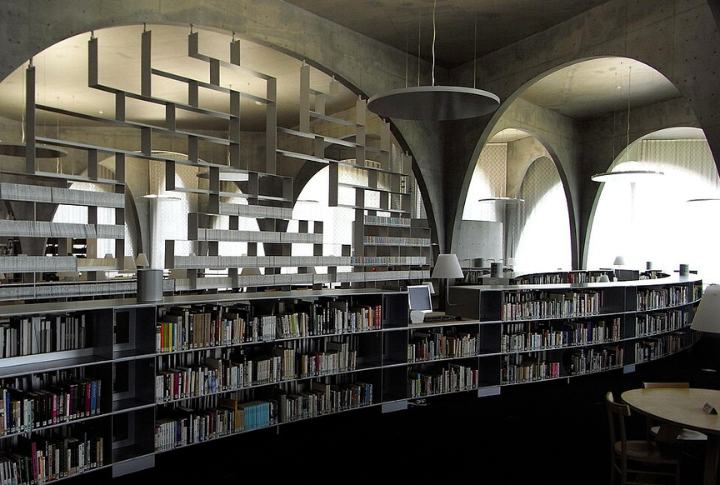
Modern minimalism meets quiet tradition at Tama Art University Library, designed by Toyo Ito in 2007. Its sleek concrete arches and glass walls create an open, contemplative environment perfect for creative exploration. The library holds about 100,000 books and feels timeless, despite its unmistakably modern structure.
George Peabody Library – Baltimore, USA
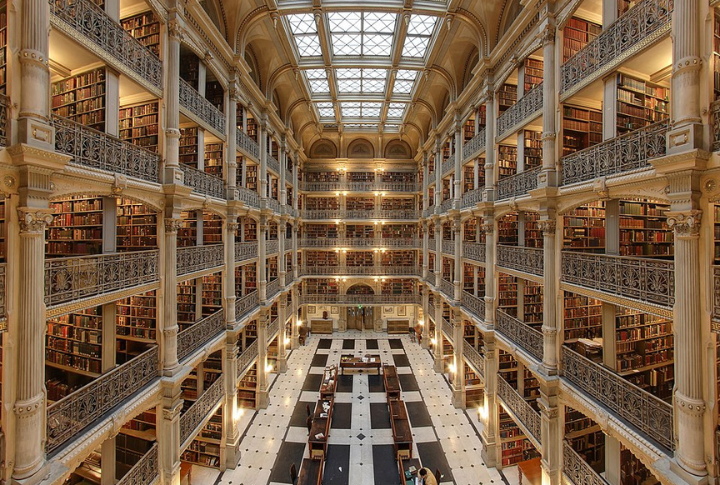
Entering the George Peabody Library feels like walking into a literary cathedral. Opened in 1878, the six-story space is framed by cast-iron balconies, marble floors, and a towering skylight. With over 300,000 volumes, mostly from the 18th and 19th centuries, it remains one of America’s grandest reading rooms.
Tianjin Binhai Library – Tianjin, China

Tianjin Binhai Library looks like something out of a sci-fi film. Designed by MVRDV and opened in 2017, its shelves ripple around a glowing sphere called “The Eye.” Some shelves are printed graphics rather than real books, sparking controversy among visitors, but the building’s futuristic design still draws huge crowds.
Library of El Escorial – San Lorenzo de El Escorial, Spain
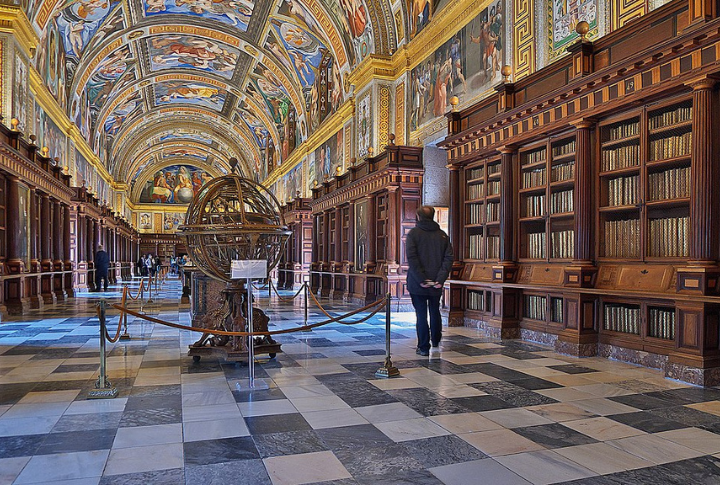
Commissioned by King Philip II in the 16th century, the Library of El Escorial is a Renaissance marvel. Frescoed ceilings celebrate the liberal arts, while rows of ancient manuscripts line carved wooden cases. Part of a UNESCO World Heritage Site, it holds some of Europe’s most important historical treasures.
Starfield Library – Seoul, South Korea

Hidden inside COEX Mall, Starfield Library is an unexpected retreat in busy Seoul. With 43-foot-tall bookshelves bathed in natural light, the space offers 70,000 books and hundreds of magazines across two open floors. Comfortable seating and soft architecture make it one of the city’s most inviting public spaces.
Royal Library – Copenhagen, Denmark
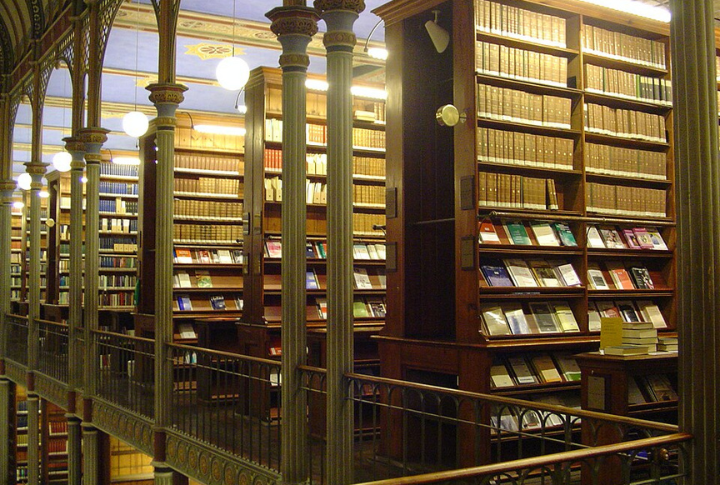
Nicknamed “The Black Diamond,” the Royal Library’s modern extension was unveiled in 1999. Shimmering black granite and vast glass walls define the exterior, while inside, the library houses Denmark’s national manuscript and rare book collections. It also serves as a vibrant cultural venue for concerts and art exhibitions.
National Library of Finland – Helsinki, Finland
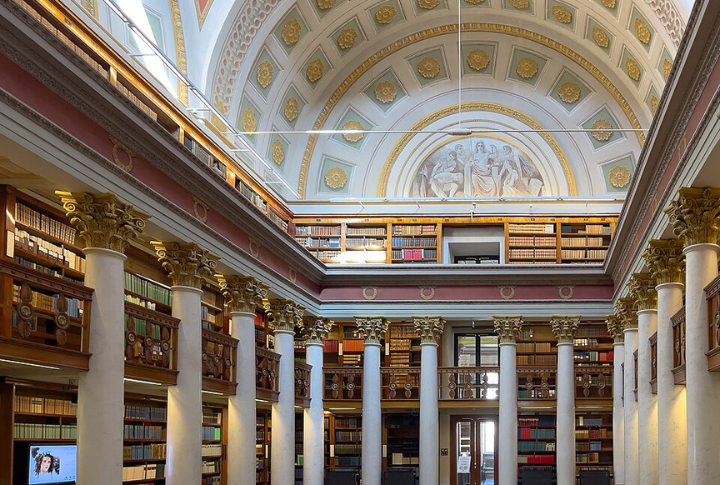
Standing just off Senate Square, the National Library of Finland is a neoclassical masterpiece designed by Carl Ludvig Engel in 1836. Its Corinthian columns, frescoed ceilings, and dramatic rotunda make it a landmark of Finnish architecture. The collection holds over three million works, including rare historical documents.
Deichman Bjorvika Library – Oslo, Norway
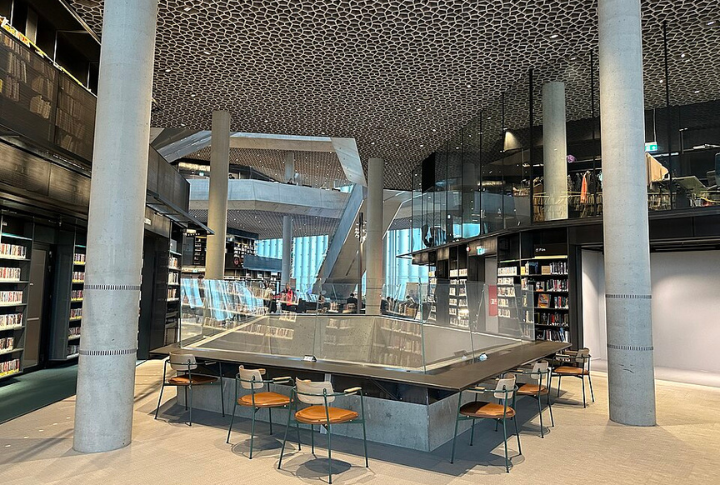
Deichman Bjorvika opened in 2020 as a reimagining of what a library could be. With fjord views, an open-plan layout, and amenities like a cinema and recording studios, it offers more than just books. Its flowing, modern design has already made it a favorite among both tourists and locals.
Strahov Monastery Library – Prague, Czech Republic
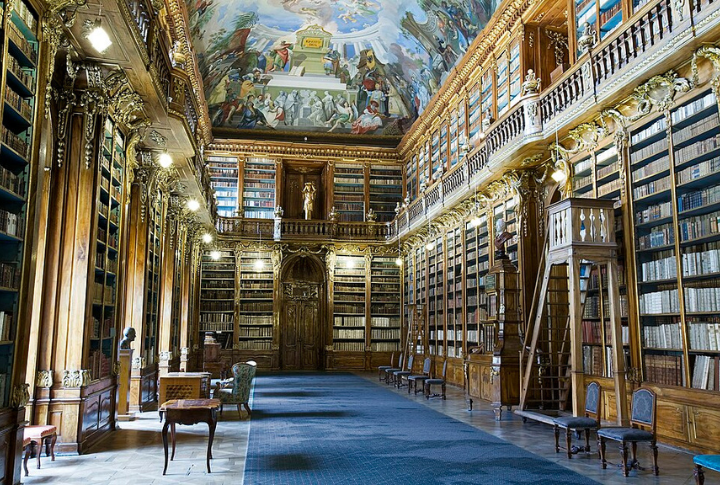
Founded in 1143, Strahov Monastery’s library reveals centuries of European history. The Baroque Theological Hall and the Philosophical Hall both feature elaborately painted ceilings, ancient globes, and intricate wooden galleries. With about 200,000 volumes, it remains one of Prague’s most visually stunning and historically important sites.
Seattle Central Library – Seattle, USA

Gunnar Asplund’s Stockholm Public Library, completed in 1928, is a landmark of Nordic Classicism. Its iconic rotunda holds books in every Nordic language, arranged under a vast white ceiling that feels almost cloudlike. Clean lines and thoughtful proportions continue to influence architects working in public design today.
Stockholm Public Library – Stockholm, Sweden
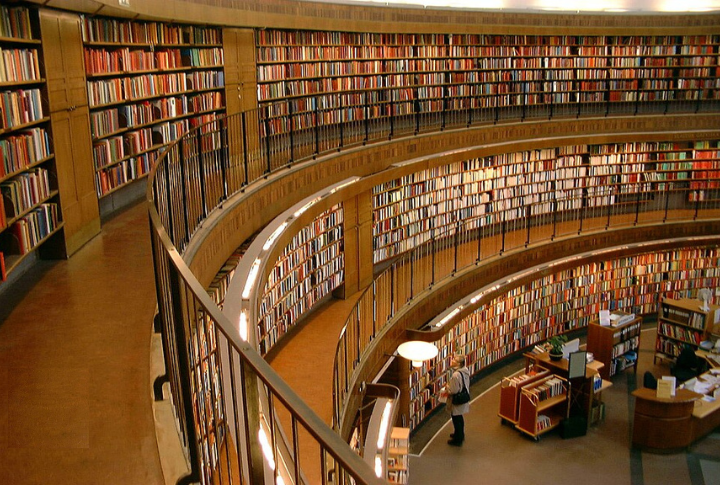
Gunnar Asplund’s Stockholm Public Library, completed in 1928, is a landmark of Nordic Classicism. Its iconic rotunda holds books in every Nordic language, arranged under a vast white ceiling that feels almost cloudlike. Clean lines and thoughtful proportions continue to influence architects working in public design today.
Central Public Library – Vancouver, Canada
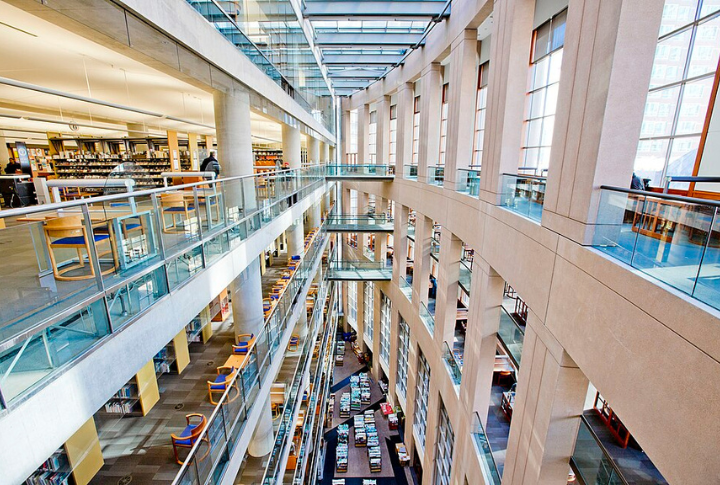
Vancouver’s Central Public Library takes inspiration from the Roman Colosseum. Designed by Moshe Safdie and completed in 1995, it wraps nine floors of books and study spaces around a sunlit atrium. Rooftop gardens, cafes, and public spaces make it a cultural hub for more than just readers.
Stuttgart City Library – Stuttgart, Germany

From the outside, Stuttgart City Library appears as a minimalist glass cube. Inside, it opens into a dazzling, all-white five-story atrium shaped like an inverted pyramid. Designed by Yi Architects and opened in 2011, the library’s clean geometry makes it one of Europe’s most striking modern public spaces.
Royal Portuguese Reading Room – Rio de Janeiro, Brazil
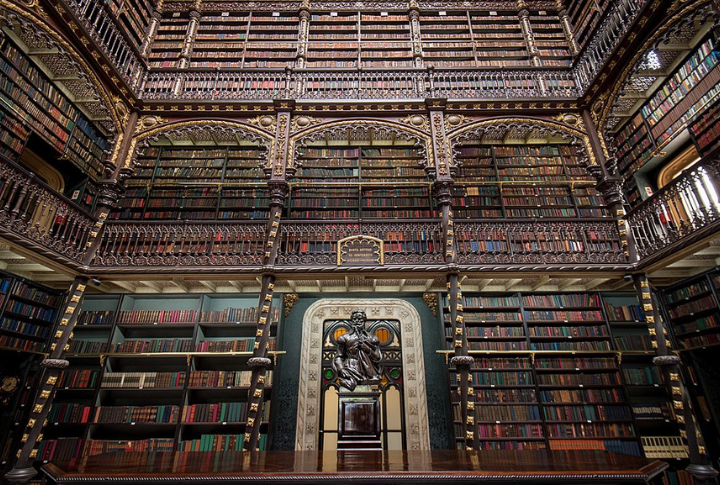
The Royal Portuguese Reading Room, opened in 1883, stuns visitors with its neo-Manueline architecture. Inspired by Lisbon’s Jerónimos Monastery, it features intricately carved wood, towering bookshelves, and a stained-glass skylight. Today, it houses the largest collection of Portuguese works outside of Portugal.
Bodleian Library – Oxford, England
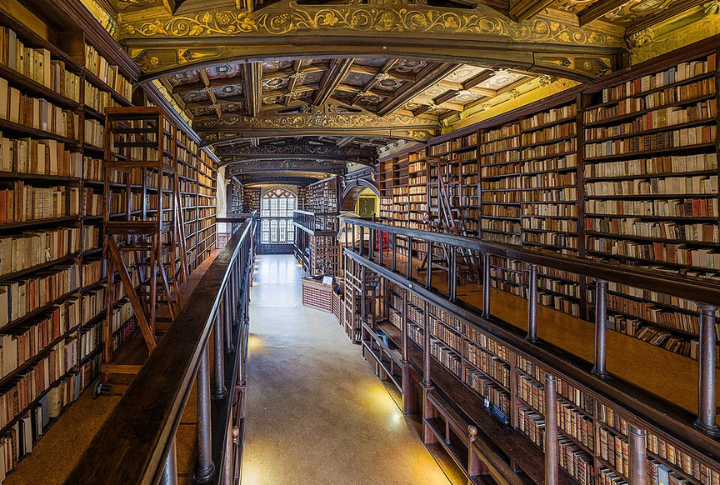
Oxford’s Bodleian Library, officially established in 1602, stands among Europe’s oldest and most respected libraries. Its historic rooms, including the medieval Divinity School and Duke Humfrey’s Library, have been preserved as treasures in their own right. The collection today holds over 12 million printed items.
Vennesla Library and Culture House – Vennesla, Norway
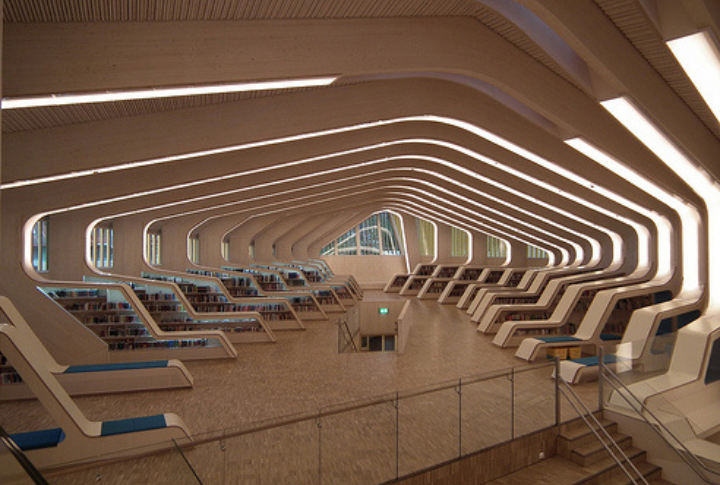
Vennesla Library and Culture House, opened in 2011, blends organic form with function. Curving wooden beams arch overhead like the ribs of a whale, creating an intimate, airy reading space. Beyond books, the center includes a café, a cinema, and classrooms for community activities and cultural events.
The Morgan Library & Museum – New York City, USA
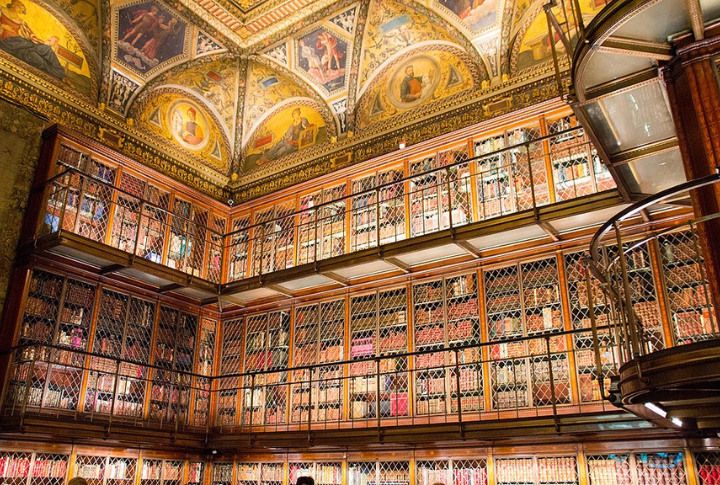
Originally the private library of financier J.P. Morgan, The Morgan Library & Museum is a jewel of Beaux-Arts design. Lavish interiors feature frescoed ceilings, carved woodwork, and soaring bookcases accessible by hidden staircases. Today, its collections include rare manuscripts, early prints, and masterpieces of illustration.
Cardiff Central Library – Cardiff, Wales

Cardiff Central Library, completed in 2009, catches the eye with colorful glass panels designed to resemble giant book spines. Inside, six floors of light-filled reading areas and interactive displays celebrate Cardiff’s literary and linguistic heritage in both English and Welsh. It’s one of Britain’s most modern library spaces.
Trinity College Library – Dublin, Ireland
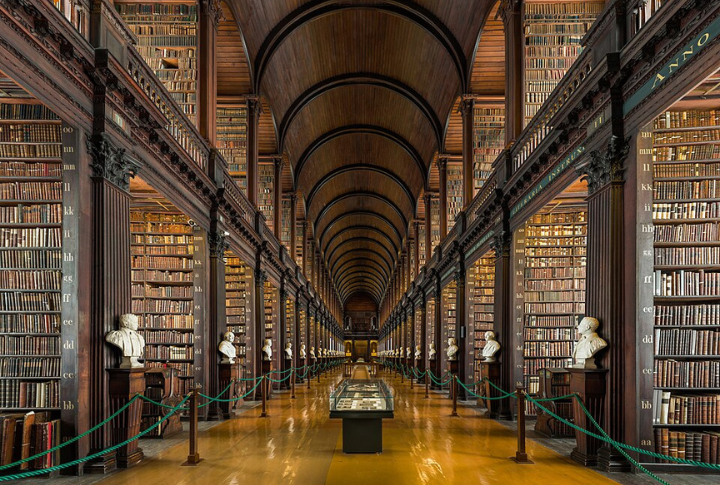
The Long Room at Trinity College Library is one of the most iconic literary sights in the world. Completed in 1732, its 213-foot hall holds over 200,000 of the library’s oldest books. Visitors also come to see the “Book of Kells,” a masterfully illuminated 9th-century manuscript on permanent display.

